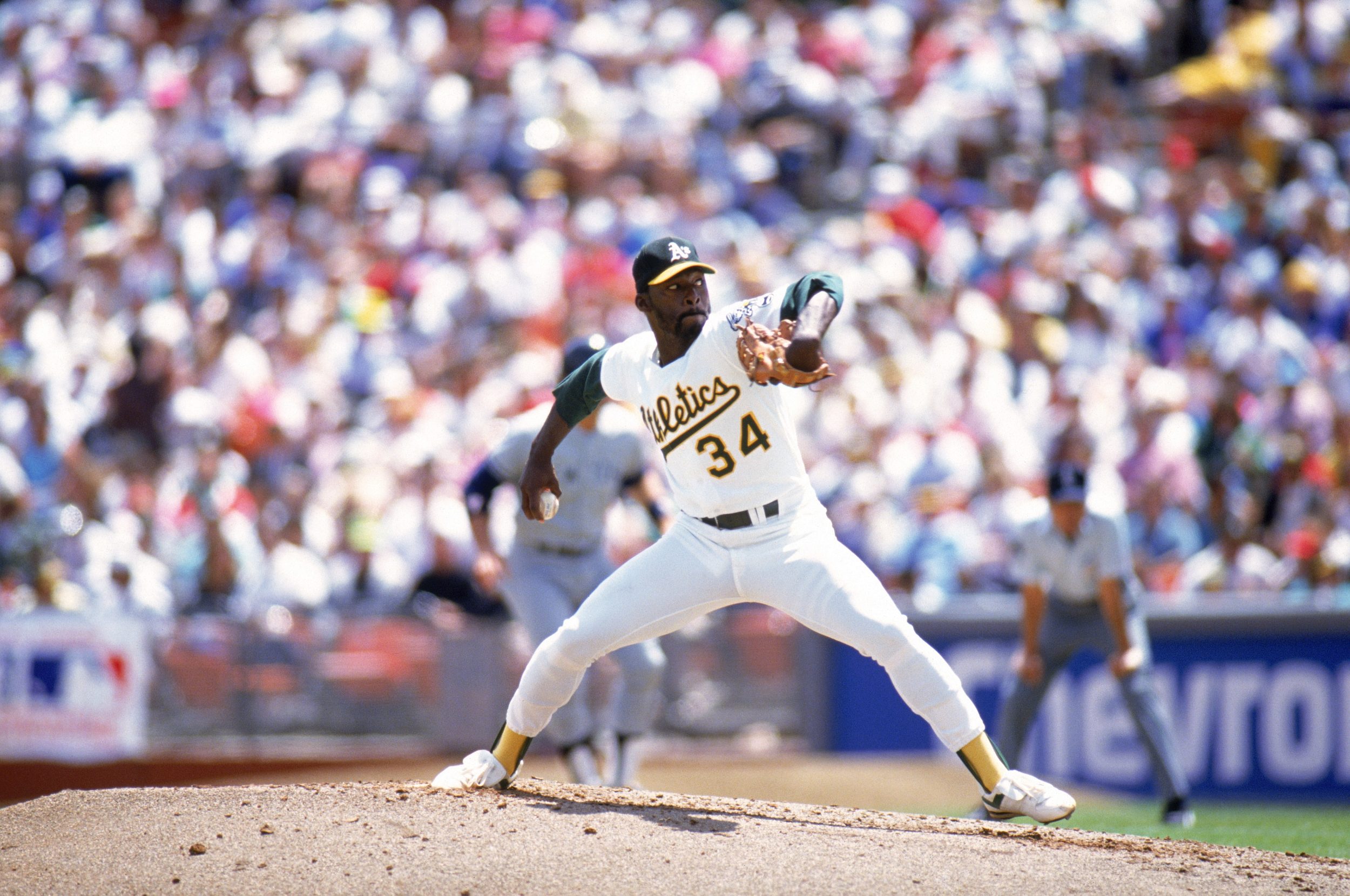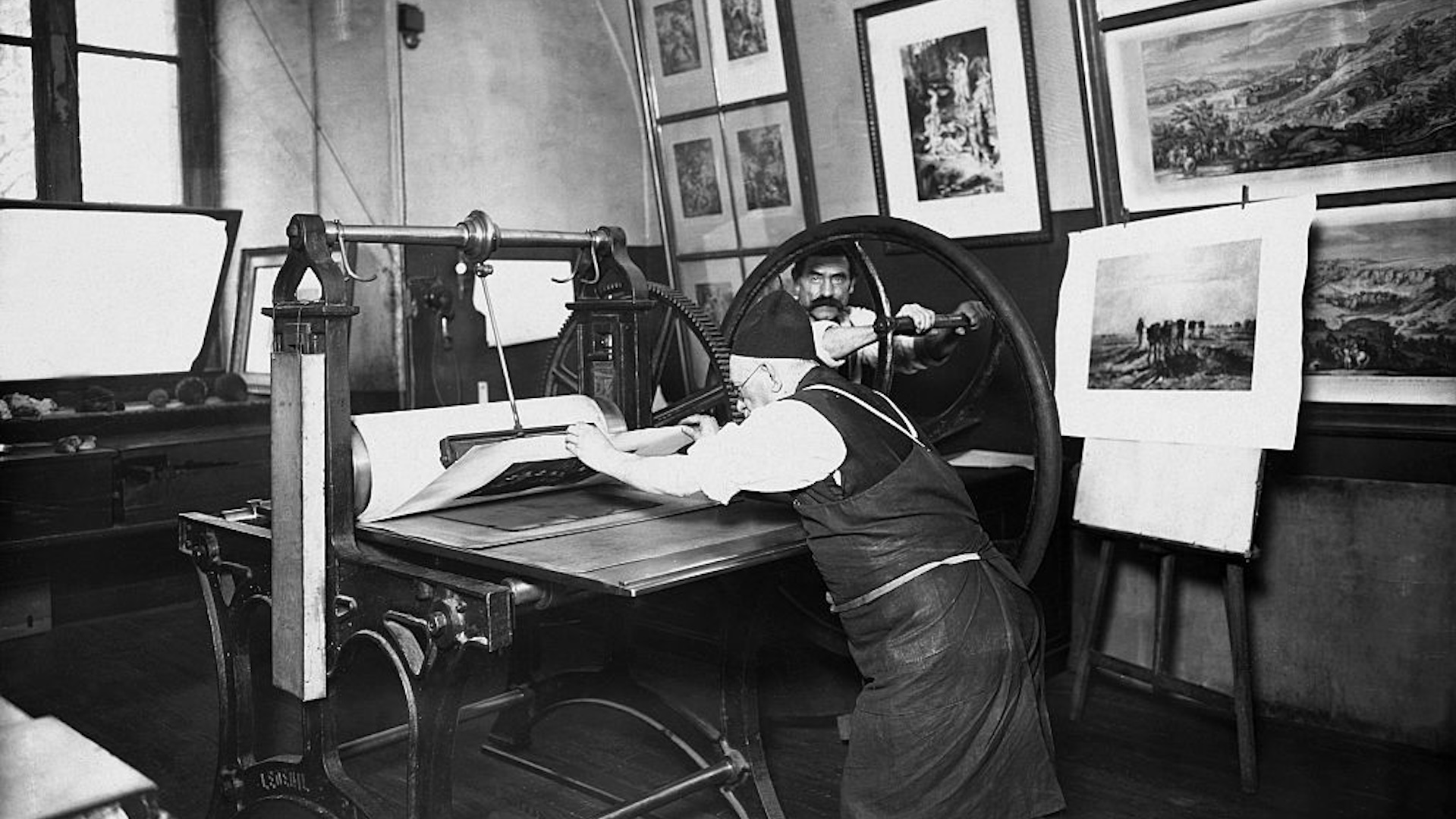I don't think I have encountered anything cooler in sports, or anyway in the talking part of sports, than the way a starting pitcher talks about pitching. When done right, it reveals all the hallmarks of all really exciting artisanship: A mesmerizing combination of dearly cherished principles, unmistakable mysticism, and the hard-won, immensely valuable, and utterly untransferable feel of untold hours and days and years of relentless tinkering. On a televised baseball broadcast, a slider is a slider, thrown at a certain velocity to a certain spot and with a certain amount of break. But each slider is the wholly unique end product of a fascinating, infinitely complex set of properties and refinements; every pitch, for the pitcher throwing it, is a life's work.
Some part of the weight and speed of Alek Manoah's slider, for example, is a simple result of his beefy 6-foot-6 frame. But the grip comes by way of Dellin Betances's cutter, and the thumb position comes from Chris Sale's slider; both of those are things that Manoah learned, according to an insanely cool blog from ESPN's Jeff Passan, while watching internet videos. A young Manoah needed some secondary pitches, so he went online-shopping for grips and thumb placements, and pieced together a reliable breaking ball that, along with a similarly re-worked and honed changeup, has made him into an ace.
That's cool enough, but fingers and laces and arm angles only describe the way Manoah's slider behaves in a bullpen or warehouse or simulated outing, how it interacts with gravity. On top of all that is Manoah's belief in the pitch, the very unscientific feel he has for it during any given at-bat, and the stubbornness he brings to any contest pitting his pitching abilities against the plate command of any wrong-headed son of a gun who dares to stand in against him. Fingers and laces and arm angles make it a slider; innate physical gifts and practice and precision make it a good slider. But even a good slider, with enough exposure, resolves as a slider, a pitch that moves in a recognizable way and can therefore be spotted and timed and barreled. Cussedness, moxie, and exaggerated self-belief, for better or worse, are the traits that tell a pitcher that he can hurl that slider past that hitter in a third or even fourth at-bat, prior exposure be damned. Pitching, at its coolest, is about staring some guy down after throwing the ball right by him, at least as much as it is about optimization. "If I bully a guy twice, I don't think he's due a third time. I think I'm gonna bully him again," Manoah tells Passan, explaining his desire to test himself in late-inning situations and strive for complete games. "I'm strong as a horse. I'm built for this stuff. ... I say this all the time: 'Let me get my ass kicked.' They understand that dog in me. I want to be out there."
Only the dog inside of a particular kind of starting pitcher is clamoring for the sharpening and toughening and character-building of a true beatdown. For Dave Stewart, who Passan says provided an early role model for Manoah, the late-inning high-wire act was pitching at its juiciest: "What I took away from completing a game: It meant I outsmarted guys 27 times," Stewart tells Passan. "I outsmarted their ass just enough that I could finish this game. I was one step ahead of you every at-bat, brother." I am pumping my fist just from reading that. Give me no sliders that are not third-time-through-the-lineup sliders. That to me is as bitchin' as a slider can get, when in addition to gorgeous physics it presents fanatical artisanship and athletic arrogance elevated to a level of near-derangement.
As all discussions of the coolness of pitching and the coolness of cool pitchers talking about pitching must eventually return to Pedro Martinez, here is Pedro Martinez summing up the hilarious but also extremely cool lunacy of a starting pitcher:
“You repeat—you try to be consistent—until they start to figure out what you’re doing. If they don’t, that’s great. Just go through your routine and repeat, repeat, repeat. I wish I could have just thrown fastballs, but that wasn’t the case. I went along with the way the hitters and the game was going. I let the game come to me. I executed whatever I had to execute.”
[...]
"Your hand and the ball is a marriage that should never end. The pitcher and the ball should be married forever. Hands, fingers, the ball—they should be married forever. It’s like caressing your wife. It’s touching and getting that feel to know her, alone. It’s the same thing with a baseball."
"I can tell you right away the difference between two balls. If you put them in my hands I’ll tell you this one I like because of this, this one I don’t like because of that. I would throw them back. Unless I felt comfortable with a ball I wanted to throw for a certain pitch, the umpire was going to get it back.”
FanGraphs
Baseball, as a business run by people who are accountable for results, doesn't particularly give a rip about some guy's romantic love of the baseball, even less so his preposterous late-inning confidence in a C-plus breaking ball. That is the conflict probed by Passan's blog: The business-minded optimization of baseball is driving the concept of the starting pitcher, at least as it has long been understood, out of the sport, even as fans and players continue to cherish and revere that old archetype. Hard as it may be to believe, there was a time not that long ago when Max Scherzer would not have had to snarl and snap at terrified managers and pitching coaches in order to gain another inning of work. For a good chunk of baseball's history, the responsibility for recording 27 outs in a baseball game fell primarily to one guy on each team: The Starting Pitcher. That guy knew he had done the job if he recorded 27 outs; if he recorded fewer than 27 outs, it was because at some point along the way he lost the ability to record any outs at all, quite possibly because his arm had fallen off. It was not the job of a bullpen to protect the arm of the starter; it was the job of the starter to protect the arms of the bullpen. An ace who was visibly wearing down while clinging to a two-run lead with two runners on base in the seventh inning was facing his own fuckin' problem, and certainly not one that could be solved by the guy who fills out the lineup card.
Whether that was good for the arms of pitchers, and whether anything that has changed about the game in the modern era has actually helped to protect those arms, and whether baseball has any realistic shot at ultimately preserving the starting pitcher as a concept and the arms of those starting pitchers, is the concern of Passan's blog, which you should absolutely read from start to finish.
The concern of this blog, though, is how cool it is when old-school starting pitchers talk about pitching. The particular challenges that face and motivate a guy who understands his job for the day as recording 27 outs in a baseball game are unlike anything else in the sport, or really any other sport. Recording 27 outs against professional-grade hitters is extremely difficult and cannot be managed by brute force. Gumption, subterfuge, psychological warfare, and resource management all come into play, and an ace pitcher is a guy who has cleaned and oiled that part of his arsenal just as rigorously as he's warmed up his throwing arm. The proper headspace is formed way in advance, says Adam Wainwright, and is tied up with intangibles like work ethic and organizational culture. "If you're OK with throwing five and you came out of the game and you thought you did your job, then the standard is set—and it's lower than it needs to be. And if your organization is programming you into believing that you did your job through five, then that's their fault. There's just no other way to put it."
"You're a professional pitch-maker," says Wainwright, very suddenly becoming one of my favorite active baseball players. "So just go out and make pitches. Make pitches, change speeds, elevate, take some off, add some, take 'em on a cab ride and you'll do a lot of cool things." Take 'em on a cab ride! Hell yeah! I have no idea what this is meant to express but I love it very dearly, especially because to Wainwright—speaking here on behalf of starting pitchers of old—it articulates something that is being driven out of the game by optimization. In days of yore grizzled starters simply took 'em on a cab ride; the kids today do not have what it takes, whether due to a failing developmental pipeline or inflated bullpens, or I guess the proliferation of ride-sharing apps, to take 'em on a cab ride. There is the clear ring of truth to this kernel of wisdom, even if I could not even begin to tell you what the hell it is describing. A pitcher who intends to face a lineup at least three times knows what it is to take some off and then to very cannily add some at a crucial later junction, in a way that a guy who intends only to face a batter once per game and absolutely no more than three times in a series simply never will.
Wainwright's appeal to professional standards is colorful and silly and opaque as hell, but to me that's the point: When I think about what is cool about pitching (which to me is still the coolest single thing in ball sports), I think about building up a repertoire of pitches and tricks and counters that is so sharp and so nasty that no lunkhead slugger with his vulgar wooden club could ever get the best of it, and then having the tenacity and resilience to stick in there until the work is done. A pitcher who is trying to get 27 outs is ultimately trying to master so much more than the grip on his slider, and as a result the way he conceives of his job is going to be so much deeper and richer and stranger than anyone else in baseball. It's cool how Juan Soto talks about hitting, yes, but hitters and relief pitchers do not have caressing the baseball as if she is your wife, but casting her away immediately if her seams are too flat. They definitely do not have takin' 'em on a cab ride. They don't have outsmarting their ass just enough that I could finish this game, which Stewart once did successfully 41 times over a four-year span. Their dogs do not and never will crave an ass-whupping. Everyone who has ever tried to throw a curveball has imagined going the distance; you need starting pitchers so that there will be someone who can regale the rest of us with all the crazy details of how it was ever done.





